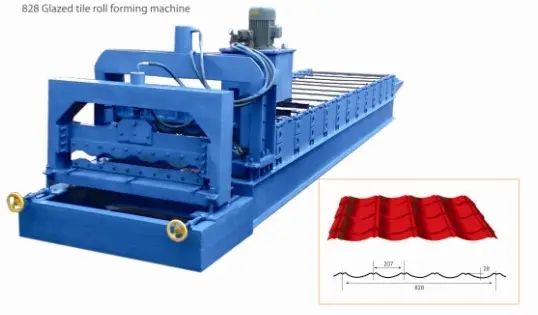
The Steel Strut Channel Roll Forming Machine An Overview
In the realm of construction and manufacturing, steel strut channels play a pivotal role in providing structural support, serving as foundational components for various applications. To produce these essential materials efficiently and with precision, the steel strut channel roll forming machine has emerged as a vital tool in the industry. This article delves into the significance, functionality, and advantages of steel strut channel roll forming machines.
What is a Steel Strut Channel Roll Forming Machine?
A steel strut channel roll forming machine is a specialized piece of equipment designed to shape and process flat steel sheets into strut channels through a continuous bending and molding process. The machine operates by feeding a steel coil into the forming system, where it is gradually shaped through a series of rollers and dies. The end result is a high-quality, uniformly shaped steel channel that can be used for various structural and engineering applications.
The Process of Roll Forming
The roll forming process begins with the preparation of raw materials, typically galvanized steel or other high-strength alloys. These materials are fed into the machine, which consists of multiple sets of rollers tailored to progressively shape the steel into the desired channel profile. The rollers are precisely calibrated to ensure that the channel dimensions are accurate and consistent throughout the production run.
The production process includes several key stages
1. Coil Loading The steel coil is loaded onto the unwinding unit, which facilitates a continuous feed of material into the forming section. 2. Forming As the steel passes through successive rolls, it undergoes bending and shaping. Each set of rollers contributes to achieving the final channel profile, which can vary in dimensions according to project specifications.
3. Cut to Length Once the channel is formed, it is cut to the desired lengths using automated cutting tools. This ensures precision and reduces material wastage.
4. Finishing After cutting, the products may undergo additional finishing processes, such as deburring, cleaning, or coating, depending on specific requirements.

Advantages of Using Steel Strut Channel Roll Forming Machines
The adoption of roll forming technology for producing steel strut channels offers several benefits
1. Efficiency The continuous nature of the roll forming process allows for high production rates. Large volumes of channels can be produced quickly, meeting the demands of fast-paced construction environments.
2. Cost-effectiveness Roll forming minimizes material waste, as it utilizes coils of steel, and reduces labor costs due to its automated processes. This leads to lower overall production costs.
3. Precision and Consistency The machine is capable of producing steel strut channels with tight tolerances and uniform geometries, ensuring that the end products meet industry standards and customer specifications.
4. Versatility Different types of strut channels can be produced by changing the roller dies, making the machine adaptable to various project needs. This flexibility allows manufacturers to cater to specific designs and sizes without significant downtime.
5. Durability Products made using roll forming techniques exhibit excellent structural integrity. The process strengthens the metal, leading to products that are both lightweight and sturdy, making them ideal for load-bearing applications.
Conclusion
The steel strut channel roll forming machine represents a significant advancement in the manufacturing of structural steel components. By combining efficiency, cost-effectiveness, and precision, these machines have become indispensable tools in the construction industry. As demands for innovative and resilient building materials continue to grow, the role of roll forming technology will undoubtedly expand, further enhancing the capabilities of manufacturers worldwide.